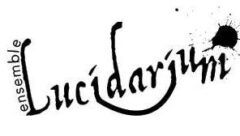AYN NEUE LID
Ayn neue Lid – When Yiddish was young
(6 musicians)
The alternation of periods of hostility with those of clemency on the part of the local population, princes and ecclesiastical institutions marked the existence of the Jews who lived in the German-speaking lands from medieval times throughout the Renaissance, and the 16th century was certainly no exception. This continuous cycle of conditioned acceptance, oppression, expulsion (and worse) would not be broken until the enlightenment. Still, despite adversity, there are clear signs of a flourishing cultural tradition, closely entwined with that of the surrounding populations. It was in this era that the seeds of “Yiddishkeit” were sown, of a poetical and musical tradition that has identified an entire people for hundreds of years.
During the 16th Century, favorable conditions in Italy attracted Jews from around Europe, while the relatively peaceful situation in Eastern Europe led to the first major Ashkenazy Diaspora, that would spread this German dialect written in Hebrew letters throughout Europe, so that books printed in Krakow, Amsterdam and Metz were sold in Prague and Lublin; and Yiddish literary works written in Venice became popular in Lithuania and the Ukraine.
Italy, a haven for Jewish intellectuals, would be a center for Yiddish composition and publishing: in fact, a surprising number of sources, especially from the first 75 or so years of the 16th century, come from Italy. This was a two-way cultural exchange, because at the same time Italian Jewish musicians, such as Abramo dell’Arpa, were in great demand at the German courts. The only known surviving Yiddish-Italian song from the Renaissance was copied in Venice, “Di’ Mensch Geglikhn,” (Man Compared.) It follows Man’s progress through the life cycle, comparing him to a different creature at every stage, from a king (all do his bidding) at birth, to a mouse (bald and slimy) at 100.
In the small South German towns where Church and Synagogue were sometimes separated only by a tavern, Jews and Christians probably used the same music for dancing and celebrations. Jewish musicians played for Christian weddings, as Jewish musicians played for gentile ones. Indeed, the many documents issued by civic and ecclesiastical authorities against intermingling during festive occasions, (especially dancing between Jews and Gentiles) prove just how common it was.
This is Yiddish at the beginning of the “fantastic voyage” that would bring it across Eastern Europe and back again. With its pithy humor, biting satire and contemplative moments, it is just as lively, earthy and touching as the Yiddish of yesterday and today.
MUSICIANS
Carla Nahadi Babelegoto, ENRICO FINK – voice
Avery Gosfield – recorder, pipe and tabor
Fabio Accurso – lute
Élodie Poirier – viola da gamba
Massimiliano Dragoni – percussion, hammer dulcimer.
Listen to our program on Soundcloud

